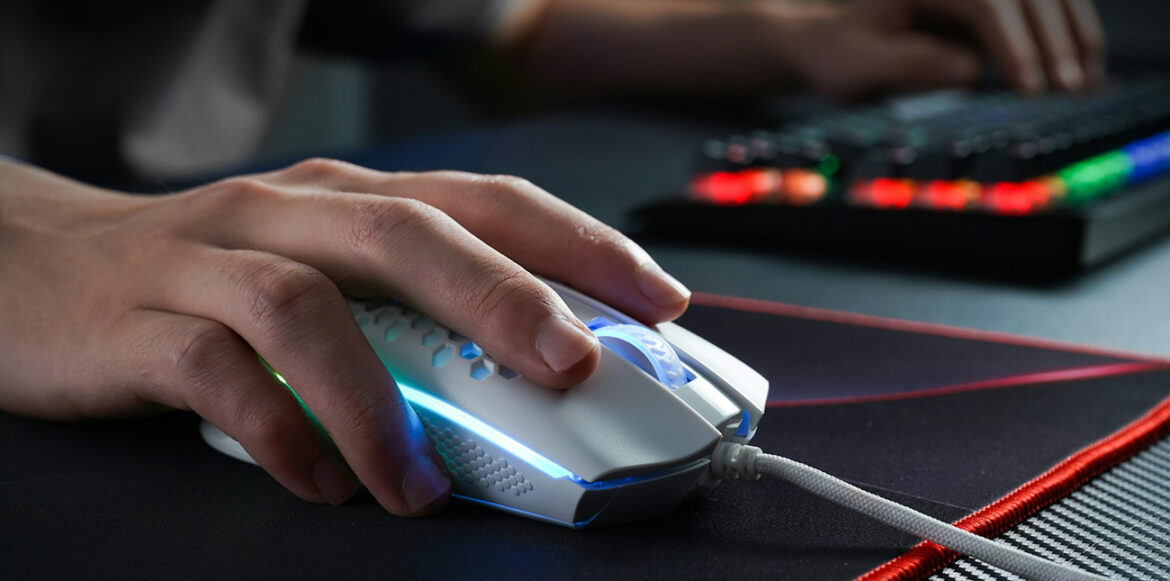As a competitive gamer and someone who’s spent far too much time tinkering with PC hardware, the debate between wired and wireless gaming mice is one I hear constantly. It used to be a clear-cut case, but technology, bless its heart, rarely stands still.
So, for all you folks out there trying to nail that perfect headshot or just navigate your desktop with pinpoint accuracy, let’s unpick the wired vs. wireless mouse conundrum for gaming.
Wired Mice: The Unwavering Dependability
For years, the wired mouse was the undisputed champion for serious gamers, and for good reason. It’s the epitome of plug-and-play simplicity. You just connect it directly to your computer’s USB port, and you’re ready to go, no faffing about with batteries or pairing.
The biggest draw for wired mice, for me, is their raw speed and reliability. With a direct connection, there’s inherently less delay, or latency, between your physical movement and what you see on screen. While modern high-end wireless mice have significantly closed the gap, wired mice still boast the absolute lowest theoretical latency, often around 0.5–1ms. This minuscule edge can be crucial in fast-paced competitive games.
You also never have to worry about the battery dying mid-match, which is a gamer’s worst nightmare. Plus, they’re typically more affordable than their wireless counterparts.
Drawbacks include:
- Cable drag, which can hinder fluid movement (though a mouse bungee can help).
- Less portability, especially for laptop users.
- A cluttered or messy desk setup due to the cable.
Wireless Mice: The Era of Freedom and Performance
Wireless mice have come an incredibly long way. What once suffered from high latency, poor battery life, and unreliable connections are now high-performance tools that rival—and sometimes surpass—wired alternatives.
Connectivity Evolution:
- Bluetooth
Convenient and battery-efficient (10+ meters range), but high latency (10–30ms) and potential for signal drops make it unsuitable for competitive gaming. - 2.4GHz Wireless
The most common standard. Offers low latency (1–5ms) and good battery life. However, interference is possible due to congestion from Wi-Fi, microwaves, and other devices. - Proprietary Protocols
Brands like CORSAIR (with SLIPSTREAM) offer optimised 2.4GHz protocols, with latency often below 1ms—on par with wired mice. - Ultra-Wideband (UWB)
A cutting-edge tech touted as 40X faster than Bluetooth and 10X more efficient than 2.4GHz. Solves congestion and interference issues and boosts battery life.
Advantages of Wireless:
- Complete freedom of movement.
- No cable drag or snagging.
- Cleaner, minimalist desk setup.
- Highly portable for laptop and mobile users.
- Top-tier performance, virtually indistinguishable from wired for most players.
Considerations:
- Battery management is required.
- Higher upfront cost.
- Potential (though rare) interference.
- Slightly heavier due to internal battery (though this is improving).
Latency and Polling Rate: The Millisecond Edge
These are the technical heart of a gaming mouse’s performance.
- Latency
The delay between action and screen response. Wired mice historically dominate here, but premium wireless models are neck and neck. - Polling Rate
Measured in Hertz (Hz), this indicates how often the mouse reports its position.- 1000 Hz = updates every millisecond
- 4000–8000 Hz = ultra-high responsiveness
Why Higher Polling Rates Matter:
- Enhanced Tracking Accuracy
- Improved Aiming Precision
- Smoother Visual Experience
- Reduced Click Latency
System Requirements:
- For 4000 Hz: 9th gen Intel i5 or AMD equivalent, 144Hz+ monitor.
- For 8000 Hz: 9th gen Intel i7 or AMD equivalent, 240Hz+ monitor.
The Battery Conundrum
A common concern for wireless mice. While basic office mice last ages, gaming mice burn through power quickly, especially at high polling rates or with RGB enabled.
Examples:
- Razer Viper V3 Hyperspeed: ~3 days with a AAA at 4000Hz.
- Logitech G Pro X Superlight: ~10 days per charge.
- Razer Deathadder V3 Pro: ~90 hours battery life.
- Logitech G305: ~250 in-game hours on a single AA.
Modern Power Solutions:
- Sleep modes.
- RGB management.
- Lower polling during non-gaming use.
- Wireless charging pads and charging-enabled mouse pads.
Pro Gamer Insights: What Do the Best Use?
Historically, wired mice ruled the pro scene. Now? All top 10 most used mice by professional players (according to ProSettings.net) are wireless.
Popular picks:
- Logitech G Pro X Superlight / Superlight 2
- Razer Viper V3 Pro
- Razer Deathadder V3 Pro
- ZOWIE EC-CW series
Takeaway:
The performance gap has narrowed so much that freedom of movement and comfort often take priority over any theoretical latency advantage.
Making Your Personal Choice
How to decide what’s best for you?
- Hardcore Competitive Gamer
Wired for ultimate consistency, or premium wireless (with <1ms latency and high polling) for freedom without compromise. - Casual Gamer
Modern wireless mice offer more than enough performance, with added convenience. - General Use & Productivity
Wireless wins for flexibility and a cleaner setup. Just manage your battery. - Laptop Users & Travellers
Wireless is ideal. No cables, more ports available, easy packing. - Budget-Conscious Buyers
Wired offers better performance per pound. A solid wired mouse can be unbeatable value.
The wired vs. wireless gaming mouse debate is no longer one-sided. Wireless technology has caught up, and UWBcould take it even further.
While wired mice still have a place for no-compromise reliability, modern wireless models deliver freedom, aesthetics, and performance. The best mouse? It’s the one that fits your hand, matches your gameplay, and doesn’t hold you back.
So try a few. Consider your needs. And enjoy the click.
